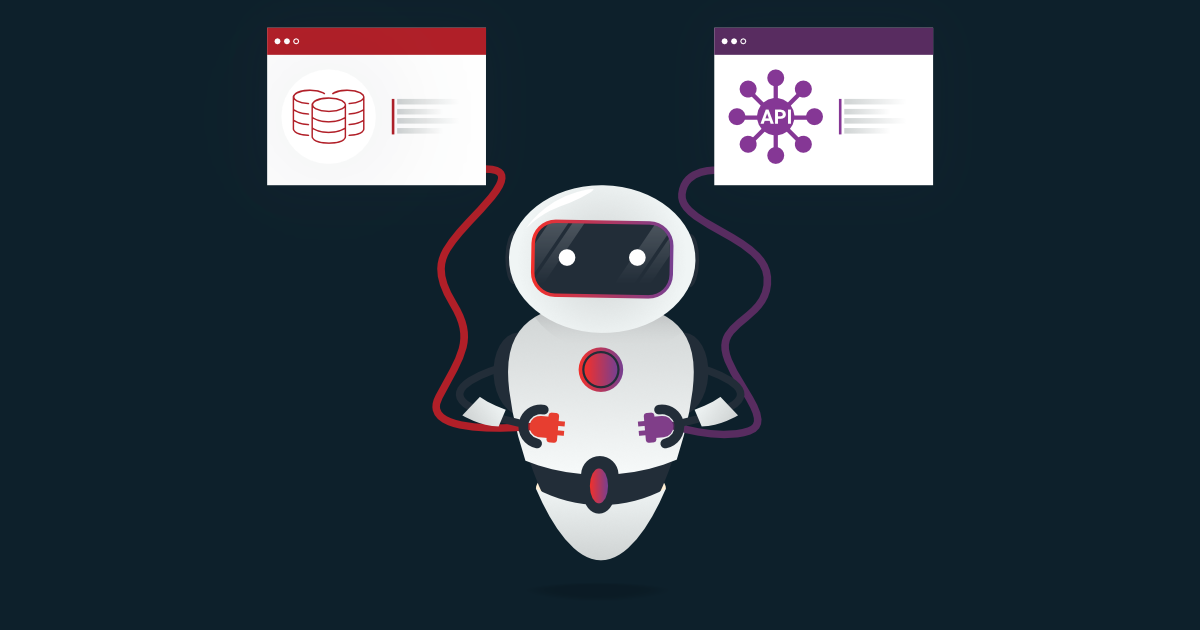Web development has come a long way since its inception, and the way we represent resources on the web has evolved significantly. With the rise of APIs and web services, it's essential for web developers to have a strong understanding of how resource representation works. In this blog, we will dive into the world of resource representation, exploring the two most popular formats used in web development today: JSON (JavaScript Object Notation) and XML (eXtensible Markup Language).
Resource representation is the process of converting data into a format that can be transmitted over the web. This format is used to represent resources such as images, videos, and text, and it enables applications to exchange data easily. The two most widely used formats for resource representation in web development are JSON and XML, and both have their own unique advantages and disadvantages.
By the end of this blog, you will have a thorough understanding of what resource representation is, how it works, and the key differences between JSON and XML. Whether you are a seasoned web developer or just starting out, this blog will provide valuable insights and help you make informed decisions when it comes to resource representation in your projects.
Importance of resource representation in web development
Understanding resource representation in web development is a critical skill for web developers to have, as it has a significant impact on the performance, security, and user experience of web applications.
Understanding resource representation in web development is important for several reasons:
- Improved data interchange
Resource representation enables applications to exchange data easily and efficiently, providing seamless communication between different systems and platforms. - Better API design
Understanding the concepts of resource representation helps web developers design better APIs that are flexible, scalable, and easy to use. - Improved user experience
Proper resource representation can improve the speed and performance of web applications, providing users with a faster and more responsive experience. - Improved security
Resource representation formats like JSON and XML can be used to transmit sensitive information, and understanding how to properly represent and secure this information is essential to maintain the security and privacy of users' data. - Better collaboration
Understanding resource representation allows web developers to better collaborate with other professionals in their organization, such as designers and data scientists, to create powerful and integrated solutions.
How does resource representation work?
The first step in resource representation is identifying the resource that needs to be represented. This can be anything from an image, video, text, or any other type of data that needs to be transmitted over the web.
Once the resource is identified, it needs to be converted into a format that can be transmitted over the web. This process is called serialization, and it involves converting the resource into a string of data that can be transmitted between systems.
The serialized data is then transmitted from one system to another, such as from a web server to a web client. The data is transmitted over the web using a standardized protocol, such as HTTP or HTTPS.
Once the serialized data reaches its destination, it needs to be converted back into its original format. This process is called deserialization, and it involves converting the string of data back into the original resource format.
The deserialized resource can then be used by the receiving system, such as a web client, to display or manipulate the resource as needed.
It's important to note that the choice of data serialization format has a significant impact on the performance, security, and ease of use of resource representation in web development. The two most widely used formats for resource representation are JSON and XML, and each has its own strengths and weaknesses.
What is JSON and what are its uses?
JSON (JavaScript Object Notation) is a lightweight data interchange format that is widely used in web development. It is a text-based format that uses a simple syntax to represent data structures, such as arrays and objects. JSON is easy to read and write, and it can be easily parsed by a wide range of programming languages, including JavaScript, Python, Ruby, and many others.
JSON is often used as a data format in APIs, where it is used to transmit data between different systems. This can include data exchange between a web server and a web client, between different services within a system, or between different systems altogether. JSON is also commonly used to store data in NoSQL databases, such as MongoDB and CouchDB.
The advantages of using JSON for resource representation
Some of the key benefits of JSON include:
- JSON is lightweight
JSON is a compact format that uses a small amount of data to represent complex data structures. This makes it ideal for transmitting data over the web, as it reduces the amount of data that needs to be transmitted, which can improve performance. - JSON is human-readable
JSON uses a simple and intuitive syntax that is easy to read and understand. This makes it easier to debug and maintain applications that use JSON. - JSON is widely supported
JSON is widely supported across a range of programming languages and platforms, making it easy to work with in a variety of environments. - JSON is easy to parse
JSON is easy to parse, and it can be easily converted into a usable data structure in a wide range of programming languages.
The disadvantages of using JSON for resource representation
JSON is a popular format for resource representation in web development due to its compact size, human-readable syntax, and widespread support. However, it also has some limitations, such as limited data types and no schema enforcement, which can make it difficult to ensure that the data is consistent and properly formatted. Ultimately, the choice of data format for resource representation depends on the specific needs of the application, and both JSON and XML have their own strengths and weaknesses.
Here are some disadvantages of using JSON for resource representation:
- JSON has limited data types
JSON only supports a limited set of data types, including strings, numbers, booleans, arrays, and objects. This can make it difficult to represent more complex data types, such as dates and times.
- JSON does not enforce a schema
JSON does not enforce a schema, meaning that the structure of the data can vary between different resources. This can make it difficult to ensure that the data is consistent and properly formatted. - JSON does not have built-in error handling
JSON does not have built-in error handling capabilities, meaning that errors in the data may not be detected until runtime.
Popular uses cases of JSON
Here are some of the more popular use cases of JSON:
- APIs
One of the most common uses of JSON in web development is as a data format in APIs. APIs allow different systems to communicate with each other, and JSON is often used to transmit data between the client (such as a web browser) and the server. For example, a weather API might return a JSON object that contains information about the current weather conditions in a specific location. - NoSQL databases
JSON is also commonly used as a data format in NoSQL databases, such as MongoDB and CouchDB. These databases are designed to store and retrieve data in a flexible and scalable way, and JSON is an ideal format for representing this type of data. - Web applications
JSON is often used in web applications to store and retrieve data in the client-side. For example, a single-page web application might use AJAX to retrieve data from a server and then use JSON to represent the data in the client-side. This can improve the performance and user experience of the application, as it allows data to be loaded dynamically without having to reload the entire page. - Microservices
JSON is also used in microservices architectures, where different services communicate with each other to perform specific tasks. In this type of architecture, JSON is often used to transmit data between the different services, as it is lightweight, easy to parse, and widely supported.
What is XML and what are its uses?
While JSON and XML both serve similar purposes as data interchange formats, there are some differences between the two.
XML is a markup language that uses tags to define elements and attributes to define their properties. It allows for more complex structures than JSON and can support a wider range of data types, including text, numbers, and even binary data. XML can also be more verbose than JSON, which can make it more difficult to read and write by hand.
XML is often used in situations where there is a need for more complex data structures, such as in configuration files, large-scale data exchange, and in the representation of more complex documents. It's also commonly used in web services, where it can be used to define the structure of the data that is exchanged between the client and the server.
Overall, while JSON is a simpler and more lightweight data format, XML provides more advanced features and can be better suited for more complex data structures.
The advantages of using XML for resource representation
Advantages of using XML for resource representation:
- XML is human-readable
Like JSON, XML is designed to be human-readable, making it easier for developers to understand and debug the data that is represented in XML format. - XML is robust for structured data
XML provides a way to represent structured data in a standard format, making it easier to exchange data between different systems. - XML can be validated
XML provides a way to validate the data that is represented, using XML Schema, DTD or other validation tools. This makes it possible to ensure that the data is valid and conforms to a specific format, making it easier to process and integrate with other systems. - XML is widely supported
XML is widely supported across a range of programming languages and platforms, making it easy to work with in a variety of environments.
The disadvantages of using XML for resource representation
- XML is verbose
Whilst XML is robust format for structured data it is also verbose as it requires a lot of markup to represent the data. This can make the data larger and slower to transmit than other data formats, such as JSON. - XML is more complex
XML can be complex to work with, as it requires a deep understanding of XML syntax and structure. This can make it more difficult for developers to work with XML, especially when compared to other data formats, such as JSON. - XML can impact performance
XML can be slower to parse and process than other data formats, such as JSON, as it requires more overhead to parse and process the markup.
XML is a powerful and flexible format for resource representation in web development, but it is not always the best choice for every situation. In some cases, JSON may be a more suitable choice, as it is lighter and faster, while in other cases, XML may be the better choice, due to its support for structured data and validation.
Popular uses cases of XML
Here are some examples of how XML is used for resource representation in web development:
- RSS feeds
XML is often used to represent RSS (Really Simple Syndication) feeds, which are used to share news, articles, and other content with a large audience. The content is represented in XML format, making it easy to parse and process using XML-based tools. - Web services
XML is commonly used in web services, where it is used to represent the data that is transmitted between the client and the server. For example, a client might send an XML request to a web service, and the server would respond with an XML response. - Document exchange
XML is used to exchange documents between different systems, such as invoices, contracts, and other business documents. This makes it possible to automate the processing of these documents, as well as to share them between different systems. - Configuration files
XML is sometimes used as a format for configuration files, as it provides a way to represent structured data in a human-readable format. For example, an application might use an XML file to store its configuration data, such as the location of the database, the settings for different modules, and other important information. - Graphics and multimedia
XML is used to represent graphics and multimedia content, such as SVG (Scalable Vector Graphics) and SMIL (Synchronized Multimedia Integration Language) files. This makes it possible to process and manipulate these files using XML-based tools and technologies.
These are just a few examples of how XML is used for resource representation in web development. XML is a versatile and flexible format that can be used for a wide range of purposes, making it an important tool for developers to understand and work with.
A comparison of JSON vs XML
JSON and XML are both widely used for resource representation in web development, but they have some key differences that make them suitable for different use cases.
JSON uses a straightforward syntax that consists of key-value pairs, making it easier to read and understand. The syntax is simple and consistent, making it easier to parse and process the data. XML, on the other hand, uses tags and attributes to represent data, which can be more complex and verbose. While XML provides more structure and flexibility, it can also make the data more difficult to read and understand.
XML provides a built-in mechanism for data validation, using tools such as XML Schema, DTD, or others. This makes it easier to ensure that the data conforms to a specific format, making it more suitable for use in applications where data quality is critical. JSON, on the other hand, does not provide a built-in mechanism for data validation, but it can be validated using custom code or third-party tools.
JSON is generally faster and more lightweight than XML, as it requires less markup to represent the same data. This makes it more suitable for use in resource-constrained environments, such as mobile devices, or in applications where speed and performance are critical. Additionally, JSON is often used for data exchange between client and server, making it more suitable for use in web applications where fast data transfer is important.
XML is widely supported across a range of programming languages and platforms, making it easy to work with in a variety of environments. This makes it more suitable for use in applications that need to interoperate with a range of different systems. JSON, on the other hand, is widely used in web development and is supported by a range of programming languages, but it may not be as widely used in other industries, such as finance or healthcare.
XML is designed for data exchange between different systems, making it easy to integrate and interoperate with other systems. This makes it more suitable for use in applications that need to exchange data with a range of different systems. JSON, on the other hand, is often used for data exchange within a single system or application, making it less suitable for use as an interchange format between different systems.
Both JSON and XML have their strengths and weaknesses, and the choice between them will depend on the specific requirements of the project and the resources available. JSON may be the better choice for projects that require a fast, lightweight, and easy-to-use format, while XML may be the better choice for projects that require structured data and validation.
The importance of understanding resource representation
Resource representation is an important concept in web development that involves defining how data is structured and transmitted over the internet. JSON and XML are two widely used formats for resource representation, each with its own strengths and weaknesses. JSON is a lightweight, fast, and simple format that is widely used in web development and is well-suited for simple, flat data structures. XML is a more complex and verbose format that is better suited for hierarchical data and complex data relationships.
It's important for web developers to understand the concept of resource representation and the differences between JSON and XML in order to make informed decisions about the best format for their project. By understanding the advantages and disadvantages of each format and considering factors such as data structure, speed, interoperability, support, and ease of use, web developers can choose the format that best meets the needs of their project.





